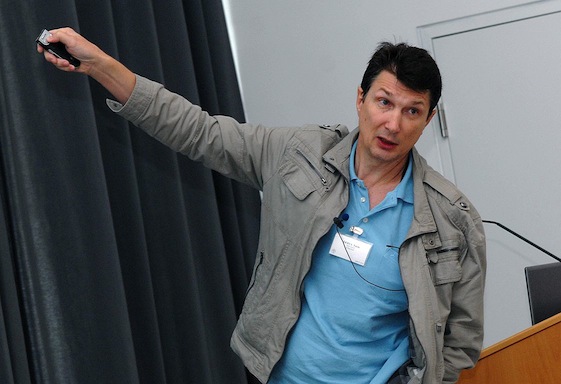
Research Topics

| Modeling of geodynamic and planetary
processes I work in the field of numerical modeling of geodynamic and planetary processes. In the last two decades, the use of computational approaches has enormously grown in Earth sciences in general and in geodynamics in particular. This is a very natural process (‘instinctive evolution’) since direct human observation capabilities are extremely limited in both time and space (depth) and rapid progress in computer technology offers exceptional possibilities to explore sophisticated mathematical models for understanding nature. Numerical modeling in Earth sciences is widely used for both testing and generating hypotheses and strongly pushing geology away from a purely observational, intuitive and descriptive discipline toward a theoretically based, deductive and predictive physical science. In this respect, geodynamics is traditionally populated by numerical modeling approaches and promotes the progress of numerical methods in geosciences. |
| Recent research directions: - Subduction processes - Fluid and melt transport - Collision processes - Slab breakoff - Oceanic spreading - Transform faults - Continental breakup and rifting - Continental crust growth - Thermal-chemical plumes - Intrusion emplacement into the crust - Earthquake triggering - Planetary core formation - Planetary surface structures - Plume-lithosphere interactions |
| Development of numerical codes I develop and use a family of original thermomechanical 2D and 3D codes I2(EL)VIS and I3(EL)VIS designed for realistic thermomechanical modeling of natural tectonic, geodynamic and planetary processes. The codes are based on finite differences (FD) and marker in cell (MIC) techniques. They use complex (elasto)viscoplastic rheology of rocks and account for changes in topography due to erosion-sedimentation processes and for changes in physical properties of rocks due to phase transformations. |
| Recent code developments: - Planetary codes with self-gravity - Fluid and melt transport in deforming rocks - Adaptive mesh refinement (AMR) on staggered grid - Deformation of compressible media - Multigrid solvers for large viscosity contrast - Geochemical transport - Surface processes - Seismic cycles |